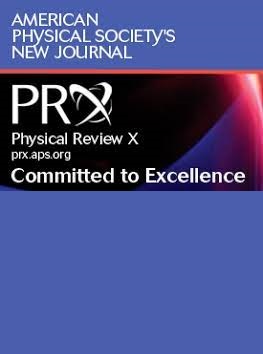Demonstration of Algorithmic Quantum Speedup for an Abelian Hidden Subgroup Problem
IF 15.7
1区 物理与天体物理
Q1 PHYSICS, MULTIDISCIPLINARY
引用次数: 0
Abstract
Simon’s problem is to find a hidden period (a bitstring) encoded into an unknown 2-to-1 function. It is one of the earliest problems for which an exponential quantum speedup was proven for ideal, noiseless quantum computers, albeit in the oracle model. Here, using two different 127-qubit IBM Quantum superconducting processors, we demonstrate an algorithmic quantum speedup for a variant of Simon’s problem where the hidden period has a restricted Hamming weight w. For sufficiently small values of一类阿贝尔隐子群问题的量子加速算法论证
Simon的问题是找到一个隐藏的周期(一个位串)编码成一个未知的2对1函数。这是指数量子加速最早被证明适用于理想的无噪声量子计算机的问题之一,尽管是在oracle模型中。在这里,使用两个不同的127量子位IBM量子超导处理器,我们展示了一种算法量子加速,用于西蒙问题的一个变体,其中隐藏周期具有有限的汉明权重w。对于足够小的w值和涉及多达58量子位的电路,我们展示了指数级加速,尽管质量低于无噪声算法预测的加速。在动态解耦保护下,加速指数和存在指数加速的w值范围得到了显著提高。进一步的增强是通过降低测量误差来实现的。这种情况构成了一个真正的量子优势的阿贝尔隐子群问题的演示。2025年由美国物理学会出版
本文章由计算机程序翻译,如有差异,请以英文原文为准。
求助全文
约1分钟内获得全文
求助全文
来源期刊

Physical Review X
PHYSICS, MULTIDISCIPLINARY-
CiteScore
24.60
自引率
1.60%
发文量
197
审稿时长
3 months
期刊介绍:
Physical Review X (PRX) stands as an exclusively online, fully open-access journal, emphasizing innovation, quality, and enduring impact in the scientific content it disseminates. Devoted to showcasing a curated selection of papers from pure, applied, and interdisciplinary physics, PRX aims to feature work with the potential to shape current and future research while leaving a lasting and profound impact in their respective fields. Encompassing the entire spectrum of physics subject areas, PRX places a special focus on groundbreaking interdisciplinary research with broad-reaching influence.
 求助内容:
求助内容: 应助结果提醒方式:
应助结果提醒方式:


